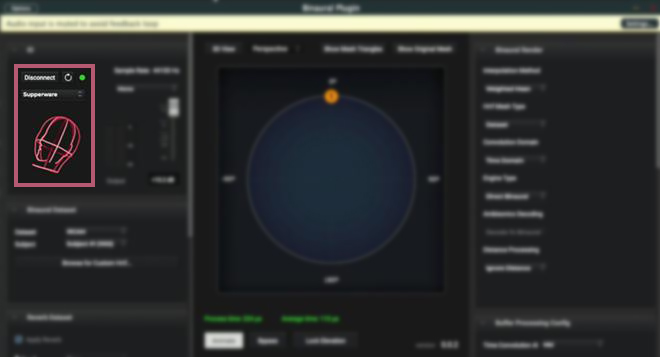Binaural Plugin
Sound Particles- Year: 2022
- Team Size: ~30
- Time: 4 months
- Employment Type: Full-time
Description
With Sound Particles having already work done on the binaural front, the next step was to expand the immersive audio experience by having the ability to pan binaural audio based on the position of the listener's head. In order to do this, integration of some kind of tracking had to be done, and in between several options, like camera-based tracking, the chosen option ended up being an IMU based solution, either integrated into the headphones, like in Apple's AirPods, or through an external Bluetooth device.

Contribution
Being brought into the team with the task of R&D'ing possible solutions for the problem at hand, the first approach consisted in trying to retrieve the IMU's information from the AirPods, since they were the first thing at hand at the office. After a couple of days researching the topic, a Swift app was put together that could receive the angles information, but this could be done only by using a proprietary API only available in iOS, which kinda limited the reach of the final product. Shortly after, work started to be done on the Waves' NX, which worked through Bluetooth.
Regarding the NX, the communication protocol used to communicate with Waves' apps was figured out, allowing the IMU's information to be accessed by a generic API created in C++ for better integration with Sound Particles codebase. Work was also done with Supperware's tracker, which had open documentation, but communicated through MIDI, forcing the C++ API to abstract the idiosyncrasies of each head-tracker. Finally, the work done was integrated in a JUCE project, further developed so the angle information could be sent using OSC, and just for good measure, Allan Deviation and other performance indicators were measured across the 3 solutions with the help of Max/MSP, and we concluded that Supperware's solution was the best fit overall.
TLDR
- Developed for Sound Particles.
- R&D regarding head tracking implementation.
- Custom head-tracking API was then implemented in a binaural plugin.
- Overarching Apple ecosystem implied technologies such as Swift and Objective-C.
- Audio related context led to MIDI and OSC work being done.
- Managed to implement 2 head-trackers + partial support for AirPods.